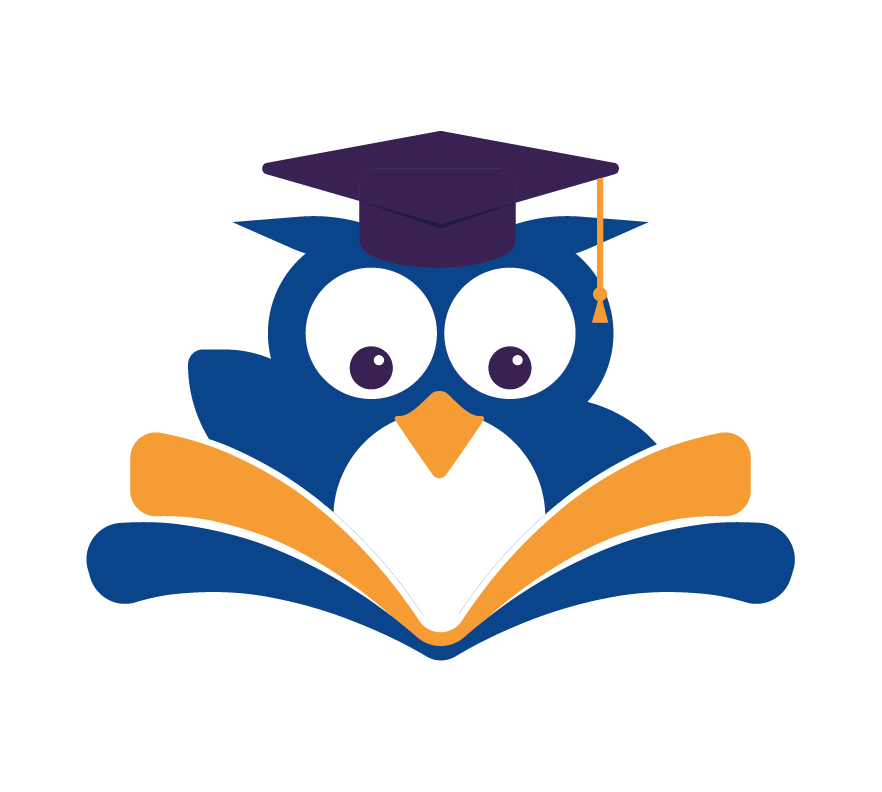Becoming a better learner is not just for the “class nerd.” It’s about using learning strategies that help you learn and apply new things better.
Learning is a lifelong journey. To improve learning skills, you must stay engaged and motivated. The right learning techniques can make your study time more effective and help you reach your goals.
So, how can you become a better learner? It’s about finding effective learning methods that fit you.
Key Takeaways
- Understand that becoming a better learner is a process
- Use practical learning strategies to enhance your learning
- Improve your learning skills with the right techniques
- Stay engaged and motivated to achieve your goals
- Be open to new learning methods and strategies
The Science Behind Effective Learning
Unlocking our learning potential starts with understanding the science of learning. Dr. Tracey Tokuhama-Espinosa says learning is about making information meaningful and storing it in our brains. Then, we can recall it in new situations. This complex process is still being studied.
How Your Brain Processes New Information
When we learn something new, our brains go through many steps. First, our senses filter the information. Then, what’s important is passed on for deeper processing. The hippocampus is key in moving this information from short-term to long-term memory. Knowing this can help us learn better.
The Neuroscience of Knowledge Retention
How well we remember information is crucial. The forgetting curve shows how memory fades over time if not refreshed. Techniques like spaced repetition can help by fighting this natural decline.
| Strategy | Description | Effectiveness |
|---|---|---|
| Spaced Repetition | Reviewing material at optimal intervals | High |
| Active Recall | Actively recalling information from memory | High |
| Chunking | Breaking down information into smaller chunks | Medium |
Why Most People Struggle with Learning
Many people find it hard to learn well. This is often because of wrong ideas about learning and not using good study methods. It’s important to know why we struggle to learn.
Common Learning Misconceptions
One big mistake is thinking learning is just about remembering stuff. Repetition is key, but it’s also important to understand and use what you’ve learned. As
“The mind is not a vessel to be filled, but a fire to be kindled.”
– Plutarch. Another wrong idea is that everyone learns the same way. But, people learn differently, like through seeing, hearing, or doing.
The Pitfalls of Passive Study Methods
Methods like just reading over and over or watching videos without doing anything don’t help much. Active engagement with what you’re learning, like explaining it in your own words or teaching it to someone, really helps. Here’s a table showing how different study methods work:
| Study Method | Effectiveness |
|---|---|
| Passive Reading | Low |
| Active Recall | High |
| Summarization | Medium-High |
Discovering Your Personal Learning Style
Your learning style is unique, and finding it can change how you study. Knowing your style helps you use methods that work for you. Most people are mostly visual, auditory, or kinesthetic. Knowing yours can make learning easier.
Visual, Auditory, and Kinesthetic Learning
Learning styles fall into three main types:
- Visual learners get information best from images, diagrams, and videos.
- Auditory learners learn by listening to lectures, discussions, or audio.
- Kinesthetic learners learn by doing, through hands-on experiences and practical exercises.
Many people have a main style, but some are a mix of two or all three.
Adapting Strategies to Your Learning Preferences
After finding your style, you can adjust your study methods. For example, if you’re a visual learner, using mind maps and infographics can help a lot. Auditory learners might enjoy podcasts or audiobooks. Kinesthetic learners should look for hands-on activities.
Matching your study methods to your preferences makes studying more fun and effective.
5 Tips to Become a Better Learner
To improve your learning, you need a solid plan. It should include effective strategies and techniques. Learning isn’t just about knowing stuff. It’s about using that knowledge in real life. We offer tips that are proven to work, based on research and expert advice.
The Framework for Transforming Your Learning Abilities
Our framework has five key tips to boost your learning. These are: mastering active recall, using spaced repetition, applying the Feynman Technique, growing your mindset, and setting up the best learning space. Each tip is important for a complete learning strategy.
How These Tips Work Together
These five tips are not just separate ideas. They are connected parts that form a strong learning framework. By using active recall, spaced repetition, and the Feynman Technique, you can handle tough learning tasks. Adding a growth mindset and a great learning space makes sure you understand and use what you learn.
Tip1: Master Active Recall Techniques
Learning active recall techniques can change the game for anyone. It’s a strategy where you actively try to remember information instead of just reading it again. This method helps you keep information in your memory and recall it when you need to.
The Science Behind Active Recall
Active recall works by strengthening the connections in your brain. When you try to remember something, you’re making those connections stronger. This makes it easier to remember in the future. This process is called retrieval practice, a key part of learning well.
Flashcard Systems
Flashcard systems are a great way to practice active recall. They let you test yourself on important terms or ideas. This helps you see where you need more practice.
Self-Quizzing Methods
Self-quizzing is another effective method. By testing yourself, you can check how well you understand something. It also helps strengthen your memory.
Concept Mapping
Concept mapping is about making visual maps of information. It helps you organize and remember complex information better. This method is great for seeing how different pieces of information relate to each other.
Common Active Recall Mistakes to Avoid
Even though active recall is powerful, there are mistakes to avoid. These include:
- Overreliance on a single method: Try different techniques to keep learning interesting and effective.
- Insufficient review: Regularly reviewing what you’ve learned is key for keeping it in your memory long-term.
- Lack of feedback: Make sure you get feedback on how well you’re recalling information. This helps you adjust your learning approach.
Tip2: Leverage Spaced Repetition Systems
Let’s explore the second tip: using spaced repetition systems to improve learning retention. Spaced repetition reviews material at longer intervals. This helps solidify it in your long-term memory.
Understanding the Forgetting Curve
The forgetting curve shows how our brains forget information over time. If we don’t recall it, we forget it. Knowing this curve helps plan study sessions for better retention.

Creating Your Optimal Review Schedule
To make a good review schedule, think about both short-term and long-term reviews.
Short-term Review Intervals
Reviewing material soon after learning it helps a lot. This can be within a day or two.
Long-term Review Strategies
For keeping information long-term, review it at longer intervals. For example, review a concept one day, then a week later, and finally after a month.
Combining Spaced Repetition with Other Methods
Spaced repetition works better with other learning methods. Techniques like active recall and the Feynman Technique can strengthen your learning strategy.
| Review Interval | Retention Benefit |
|---|---|
| 1 day | Short-term recall boost |
| 1 week | Medium-term retention |
| 1 month | Long-term memory consolidation |
Using spaced repetition systems and understanding the forgetting curve can greatly improve learning retention. Try different review schedules to see what works best for you.
Tip3: Apply the Feynman Technique
Teaching others what you’ve learned helps you understand it better. This method is named after Richard Feynman, a Nobel Prize-winning physicist. He was known for making complex concepts simple.
The Four Steps of Simplified Explanation
The Feynman Technique has a simple four-step process:
- Identify Knowledge Gaps: Start by writing down what you want to learn or understand better. Identify areas where your knowledge is lacking.
- Simplify Complex Concepts: Explain the concept in simple terms, as if teaching it to someone else. Avoid jargon and technical terms.
- Refine Your Explanation: Go back and refine your explanation, filling in any gaps or areas where you’re still unsure.
- Review and Simplify Further: Review your explanation and simplify it further if possible.
Identifying Knowledge Gaps
To apply the Feynman Technique effectively, you first need to identify what you don’t know. This involves being honest with yourself about the limits of your understanding.
Simplifying Complex Concepts
Simplifying complex concepts is at the heart of the Feynman Technique. By breaking down information into its most basic elements, you can gain a deeper understanding.
Refining Your Explanation
Refining your explanation is crucial. It involves revisiting the material, filling in gaps, and ensuring that your explanation is clear and concise.
Using Analogies to Enhance Understanding
One powerful way to enhance your understanding and explanation of complex concepts is by using analogies. Analogies help to relate new information to something you already know, making it easier to grasp.
Tip4: Cultivate a Growth Mindset for Learning
A growth mindset is key to unlocking your full learning potential. It’s a skill you can develop over time. By adopting this mindset, you can change how you learn and achieve more success.
Fixed vs. Growth Mindset in Learning Contexts
It’s important to know the difference between fixed and growth mindsets. A fixed mindset thinks your abilities are set from birth. On the other hand, a growth mindset believes you can grow your abilities through hard work and dedication. As Carol S. Dweck, a famous psychologist, says,
“The view you adopt for yourself profoundly affects the way you lead your life.”
Having a growth mindset helps you tackle learning challenges better.
Reframing Learning Challenges as Opportunities
People with a growth mindset see challenges as chances to grow, not as barriers. This mindset lets them face difficulties with a positive outlook.
Embracing Productive Struggle
Seeing challenges as part of learning is key. It pushes you to think deeply and solve problems.
Learning from Mistakes
Learning from mistakes is vital in a growth mindset. Instead of fearing failure, see it as a step towards success. Thomas Edison once said,
“I have not failed. I’ve just found 10,000 ways that won’t work.”
Developing Learning Resilience
Learning resilience means bouncing back from setbacks and staying motivated. It’s about keeping your focus on your goals, even when faced with obstacles.
Building a growth mindset takes time and effort. But the rewards are huge. By facing challenges, learning from mistakes, and staying resilient, you’ll become a more confident and effective learner.

Tip5: Design Your Optimal Learning Environment
Your learning environment greatly affects your productivity and focus. A well-designed space can boost your learning and retention. We’ll look at how to make both your physical and digital spaces perfect for learning.
Physical Environment Optimization
Creating a great physical workspace is key for learning. Here are important points to think about:
Workspace Organization
Keeping your workspace tidy is crucial. Organize your study materials so they’re easy to find. This saves time and cuts down on distractions.
Lighting and Ergonomics
Good lighting and ergonomics are vital for comfort and productivity. Make sure your study area is well-lit and your furniture supports good posture.
Minimizing Distractions
Find and reduce distractions in your study area. This might mean turning off phone notifications or finding a quiet spot.
Digital Environment Management
Managing your digital space is as important as your physical one. Organize your digital files and keep your devices free from distractions. Use tools like website blockers to stay focused on your studies.
By improving both your physical and digital environments, you can greatly boost your learning. Remember, your surroundings are key to staying focused and retaining information.
Applying These Techniques to Different Learning Challenges
Now, let’s see how these methods can help with various learning challenges. This includes both schoolwork and professional growth.
These techniques are flexible and can be used by anyone. Whether you’re in school, working, or just learning for fun, they can be adjusted to fit your needs.
Academic Learning Scenarios
In school, using active recall and spaced repetition can really help. For example, flashcards or concept maps can make learning stick better.
The Feynman Technique can also simplify tough subjects. This makes them easier to remember and understand for tests.
Professional Skill Development
For work, these methods can keep you up-to-date. Spaced repetition is great for remembering important terms or rules.
Active recall helps in using new skills from training or online courses. This ensures you can apply what you’ve learned on the job.
| Technique | Academic Use | Professional Use |
|---|---|---|
| Active Recall | Reinforcing knowledge for exams | Applying new skills in the workplace |
| Spaced Repetition | Memorizing complex formulas | Retaining industry-specific terminology |
| Feynman Technique | Simplifying complex concepts for study groups | Explaining technical information to non-technical colleagues |
Creative and Practical Skills Acquisition
For creative or practical skills, these methods provide a clear learning path. The Feynman Technique helps grasp the basics of a skill.
Active recall and spaced repetition help improve skills over time. This is true for learning a new language, playing an instrument, or mastering a sport.
Conclusion
We’ve looked at five key tips to change how you learn. Using these strategies can make you better at learning new things.
We talked about how to use active recall, spaced repetition, and the Feynman Technique. We also covered how to grow your mindset and create the best learning space. These methods help you learn more effectively.
When you start using these tips, you’ll see your learning skills get better. You’ll feel more confident when facing tough subjects. Remember, becoming a better learner takes time and effort.
By making these strategies a part of your daily life, you’ll get closer to your learning goals. So, start today and see how effective learning can change your life.

